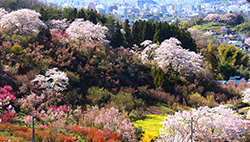Drinking Fukushima Sake Warm—The Secrets of Kanzake
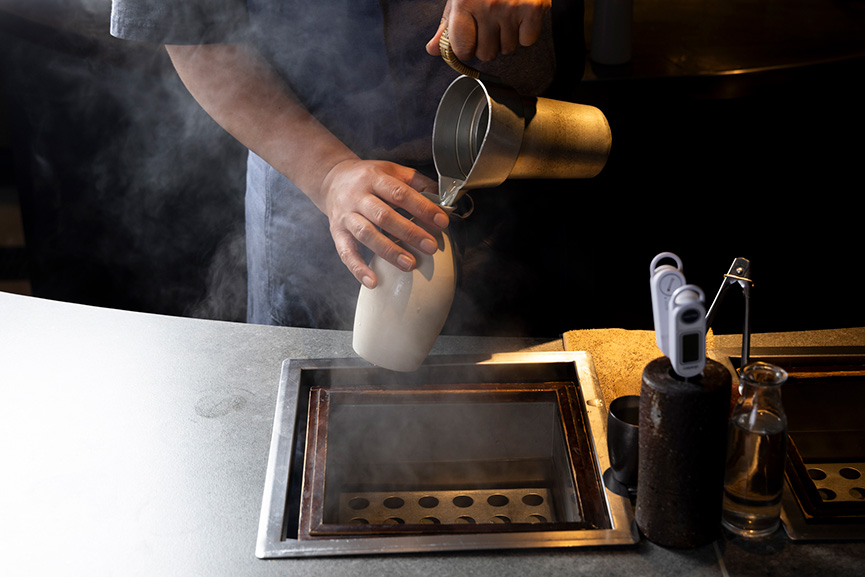
Drinking sake at different temperatures can give you an entirely different experience each time. While chilled sake is a delight to the palate, warming it up can bring out the drink's rich and intricate flavors. We interviewed two kanzake (warm sake) aficionados, Jo Takasaki and Kenji Suzuki, who shared their insights on how to enjoy kanzake and which Fukushima sake are best suited to being served warm.
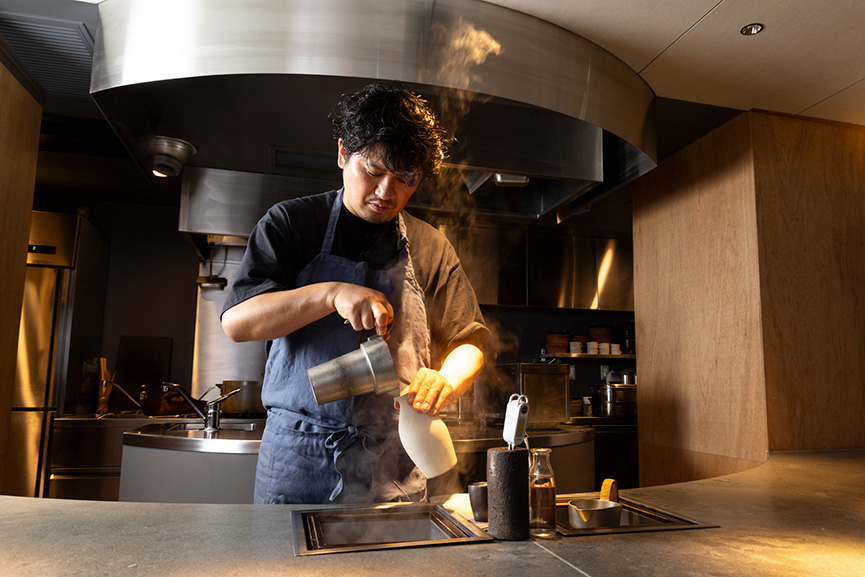
Jo Takasaki
Atsukan sommelier. Born in 1981 in Futaba Town, Fukushima Prefecture, where his family operated Kitchen Takasaki, a Western-style restaurant. After training as a chef in Tokyo, he opened the izakaya JOE'S MAN in his hometown. Unfortunately, he was forced to close due to the impact of the Great East Japan Earthquake. In December 2021, he opened Takasaki no Okan (Takasaki’s warm sake) in Meguro Ward, Tokyo, aiming to offer his customers the finest kanzake experience.
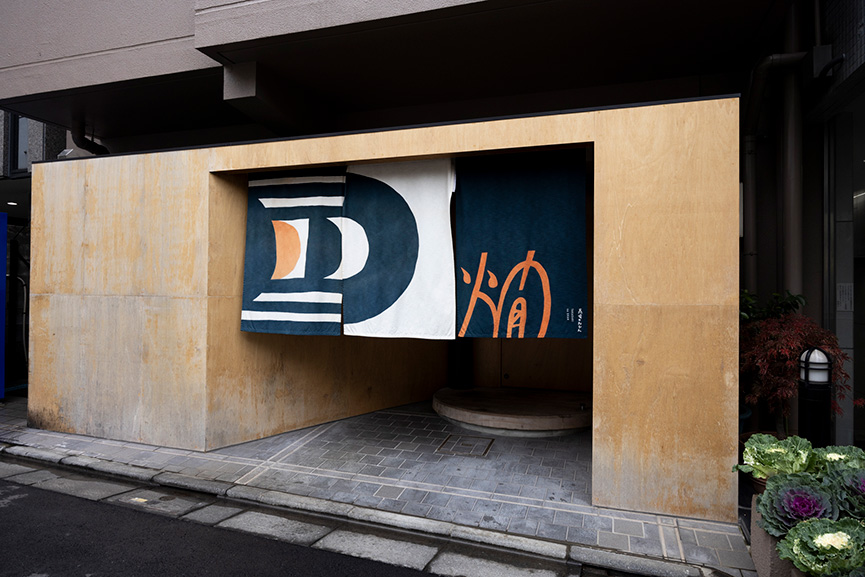
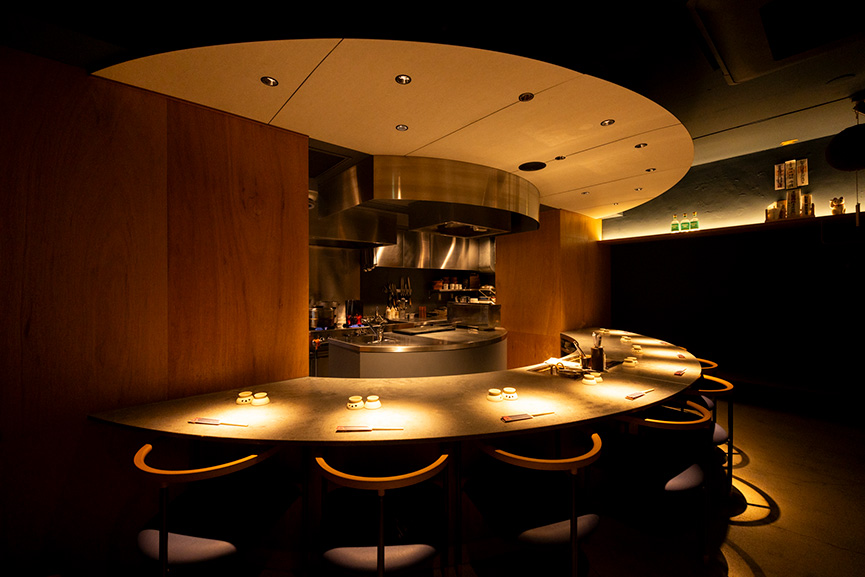
Exterior (top) and interior (bottom) views of Takasaki no Okan
Betting His Livelihood on Kanzake
In December 2021, Takasaki no Okan opened in Tokyo's Meguro Ward as a well-kept secret for kanzake lovers. Since then, owner-chef Jo Takasaki, the atsukan sommelier, has not only captured the attention of sake enthusiasts but also garnered praise in culinary specialty magazines for his artful pairings of warm sake with delectable dishes.
Hailing from Futaba Town in Fukushima Prefecture, Takasaki was forced to close his first izakaya, JOE’S MAN, following the devastating Great East Japan Earthquake in 2011. Undeterred, he moved to Tokyo and opened JOE'S MAN 2 in Sangenjaya in 2014, where his kanzake first drew interest. Eager to share the charm of the warm sake that won him acclaim, Takasaki opened a restaurant where he serves his refined pairing dishes with kanzake, called Takasaki no Okan.
“After the earthquake, while tirelessly working in Tokyo, I deeply contemplated what my path forward should be, what I can offer the world, and what my unique strengths are. Ultimately, this introspection led me to see the untapped potential of kanzake,” Takasaki says.
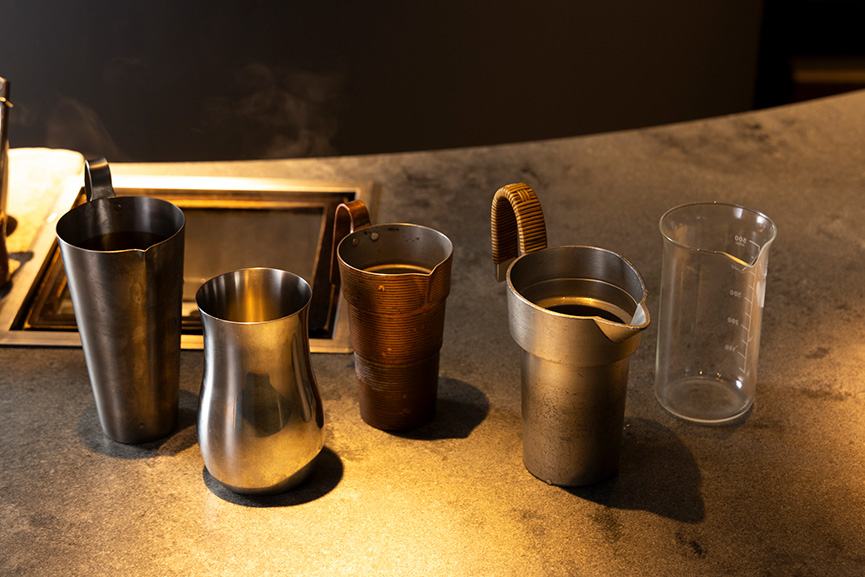
The counter has two kandoko sake warming tubs, one with water heated to 60℃and the other to 90℃. Jo uses five different types of sake vessels, including a copper chirori known for its exceptional heat conductivity, which enhances the sake's crisp finish.
Explaining his approach, Takasaki says, "If I were to liken these vessels to cooking methods, using the copper vessel is like grilling, the tin is for simmering, the beaker is for steaming, the stainless decanter is for deep-frying, and the titanium vessel is for cooking over firewood. I associate these cooking processes with each sake vessel as I warm sake to pair with different dishes."
Kanzake is Gentle on the Body
According to Takasaki, one of the key benefits of warm sake is its gentle impact on the body. Heating up sake makes it easier for the body to break down alcohol, reducing the risk of a hangover. “Apparently, alcohol breakdown starts at around the same temperature as body temperature. In other words, warm sake is more easily metabolized than cold sake, which makes for a much more pleasant awakening the following morning.”
Another benefit of heating up sake is its effect on our palate. The colder the beverage, the harder it is for the human tongue to discern the flavor. Flavors start to become more appreciable when the drink temperature reaches the 30~40 ℃ range. Warming sake enhances its flavor profile, expanding the possibilities for pairing it with various dishes.
“The modern culture of enjoying cold sake derives from advancements in refrigeration technology. Originally, sake was intended to be consumed warm. Furthermore, in the past, rice was cultivated organically, utilizing readily available organic matter without the use of pesticides. Rice grown in this way is delicious down to the bran. Sake made from this type of rice requires minimal removal of the bran and contains absolutely no unpleasant tastes. Warming it enhances the sake’s natural deliciousness.”
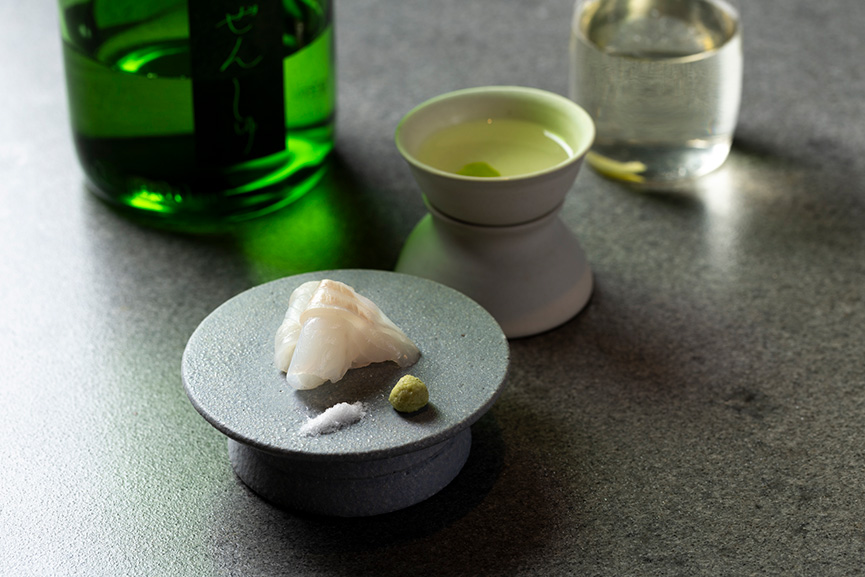
Shizenshu Melon3.33 brewed by Niida Honke in Koriyama City, Fukushima Prefecture, prepared at 58℃ and paired with Barfin flounder sashimi:
The sake is warmed with the titanium chirori vessel and topped with a slice of Japan-grown bergamot peel for scent. According to Takasaki, “the sake’s warmth melts the fat of the sashimi and amplifies the umami. The bergamot scent is refreshing on the palate.”
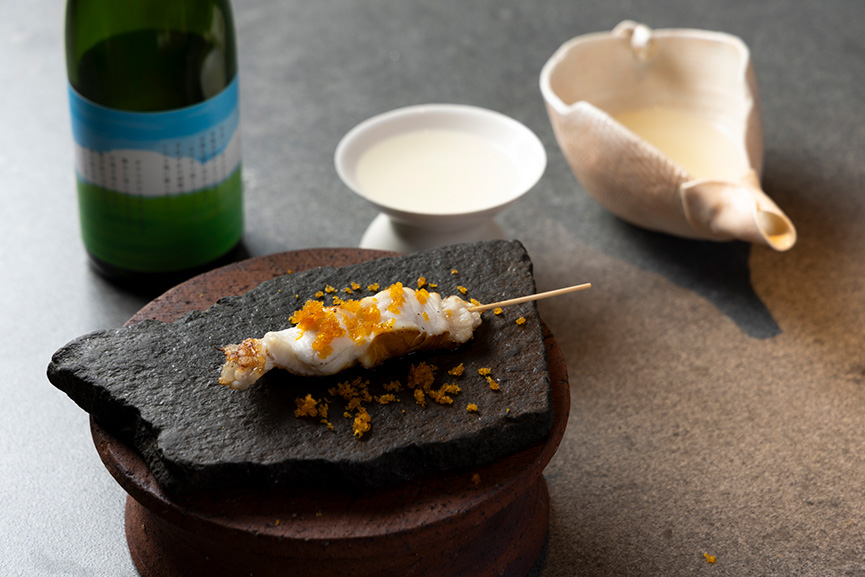
Mizu wo amu –AgriRoad– from the haccoba brewery in Minami Soma City, Fukushima Prefecture, prepared at 53℃ and paired with straw-grilled flounder:
The delicate and clear quality of the sake harmonizes with the subtle taste of the fish. “Karasumi (dried mullet roe) pairs very well with sake. I added the straw’s smoky aroma to the combination,” notes Takasaki.

Kogane Mitsuzake from the Suzuki Brewery in Nagai City, Yamagata Prefecture, prepared at 68℃ and paired with chawanmushi steamed egg custard:
Kogane Mitsuzake is mirin sweetened sake with a clear and refined taste. By taking a sip of it after savoring a bite of chawanmushi made with hard clams and soy milk, it creates a caramel pudding-like flavor in your mouth.
“If you add milk foam to the sake halfway through, the very sweet aromas from the mirin becomes even more fun and enjoyable as you finish it off. This paring is the classic final combo at Takasaki no Okan,” Takasaki explains.
Kanzake Tells You About the Sake’s Terroir
What elements make a sake suitable to warming? Takasaki emphasizes that the sake’s origins—the soil the sake rice grew in—is of utmost importance, even more so than the sake’s aroma and taste. “While there are renowned varieties of sake rice such as Yamada Nishiki and Omachi, when I select sake for kanzake, the most important factor is not the rice variety, but rather the soil that nurtured the rice used in the sake. I believe that warming sake unveils the true nature of the sake rice and the unique characteristics of the soil.”
When pairing warmed sake with cuisine, Takasaki carefully considers the philosophies of the brewers. He aims to showcase what the brewers aspire to express through their sake, and serve it at the optimal temperature to bring their visions to life. “In my restaurant, I primarily offer sake made from rice grown in healthy soil, such as the junmai sake produced by Niida Honke, which uses 100 percent naturally cultivated rice (without using any chemical fertilizers or pesticides). Similarly, the ingredients used in my dishes are mostly naturally or organically cultivated. Conveying and elevating the value of wholesome agriculture and food is the role of a dining establishment. I want to do that through kanzake.”
Restaurant name
Takasaki no Okan
Address
3-10-11 Aobadai, Meguro-ku, Aobadai Flats 1F
Hours
○By reservation only. The dinner course is served twice a night.
○Closed Sundays (or due to events and business trips)
○Dinner times
1st round starts at 18:00
2nd round starts at 20:45
(Guests can enter the restaurant at 17:45 and 20:40 respectively)
https://lit.link/takasakinookan
How to Enjoy Kanzake, According to Kenji Suzuki, the “Master of Sake”
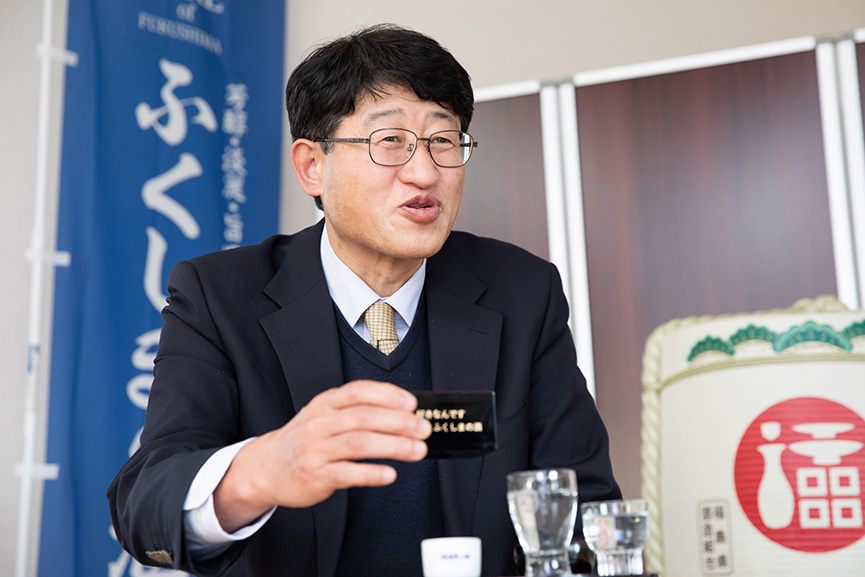
Kenji Suzuki
Former Vice Chief of the Fukushima Technology Center (High Tech Plaza) Aizu-Wakamatsu Technical Support Center. Currently retired, he serves as a special advisor to the Fukushima Prefecture Sake Brewers Association. He created the Fukushima-style Ginjo Sake Production Manual, contributing to the improvement of the prefecture's sake quality. His efforts have led Fukushima to set the record for winning the most gold medals at the prestigious Annual Japan Sake Awards contest for nine times consecutively
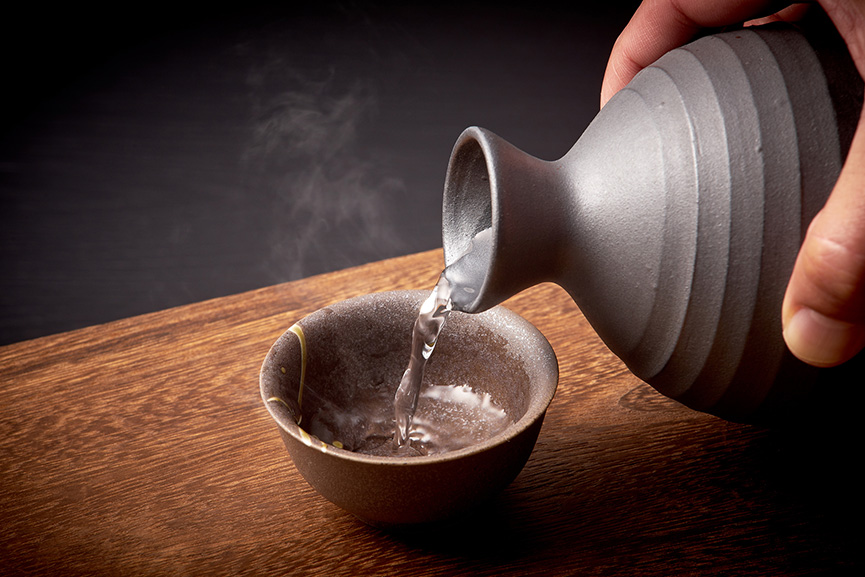
Kanzake Draws Out Sake’s Aroma and Umami
Heating sake enriches its aroma and intensifies its flavor. This happens because the human palate is particularly receptive to sweetness when a substance's temperature is closer to body temperature. On the contrary, bitterness and astringency recede as the sake is warmed. Essentially, warming sake diminishes the bitterness and astringency often found in sake, giving even dry varieties delicately nuanced flavors. Moreover, warming sake with a high amino acid content, which might feel too heavy on the palate when cold, brings out a rich umami, offering a refreshing and smooth drinking experience.
Additionally, acetaldehyde, a compound known to contribute to hangovers, has a lower boiling point than alcohol. Therefore, when sake is heated, a significant portion of this compound evaporates, reducing stress on the body and allowing a smooth recovery. This just adds to the appeal of enjoying kanzake.
What Kinds of Sake Are Best Suited to Kanzake?
Generally, orthodox junmai sake make for good kanzake. For instance, Junmai Kimoto by the Daishichi Brewery in Nihonmatsu City, Densho Yamahai Junmai from the Suehiro Brewery in Aizu-Wakamatsu City, Koshikimine Tokubetsu Junmai-shu by the Himonoya Brewery in Nihonmatsu City, and Iwaki Kotobuki Akagane Jukusei Junmai by the Suzuki Brewery in Namie Town are all ideal for serving warm. The deliciousness of sake made with traditional methods like kimoto or yamahai, as well as aged junmai sake, only truly come to life when warmed.
On the other hand, there may be a traditional perception that luxury sake like daiginjo are not suited to being enjoyed warm. However, this is not the case. If you have a fragrant sake, you can try nurukan (mildly warm sake), which is heated to about 40~45℃. Warming it brings out the sake’s umami and allows you to enjoy the aroma to the fullest.
Sake Unsuited to Kanzake
Another important aspect to consider when selecting sake for kanzake is the absence of off-flavors, known as zatsumi, which refers to odors that derive from filtration materials used in the production process. Zatsumi become very apparent once the sake is warmed. Kanzake starkly reveals the sake brewery's cleanliness and technical standards.
Furthermore, there are other types of sake that undergo unfavorable changes in aroma and flavor when heated. One of these types is sake that exudes a yogurt-like smell, called a diacetyl odor. The other is junmai sake characterized by a strong distinctive nama (raw) aroma. As these two types of sake are prone to developing unpleasant odors when warmed, it’s best to enjoy them chilled.
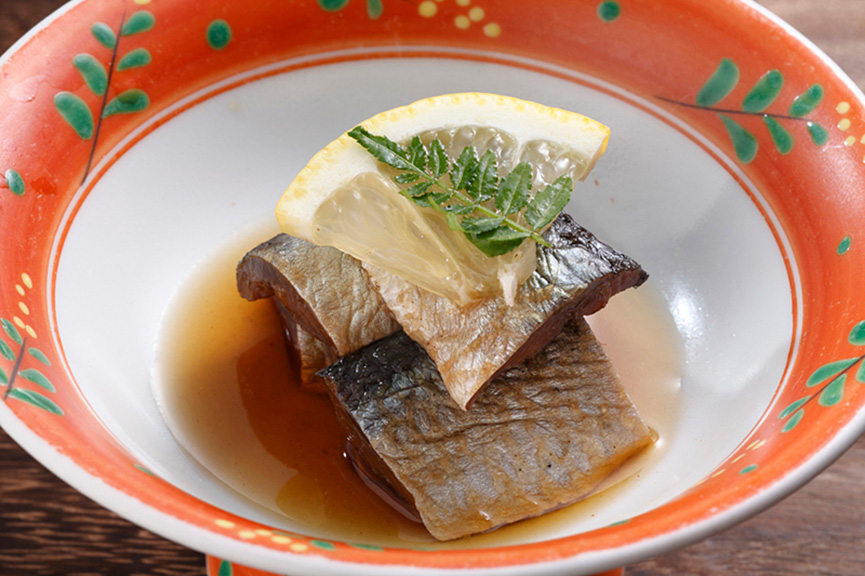
Fukushima's local delicacy, Pacific saury pickled with sansho pepper, pairs perfectly with aged sake served warm.
Drink Kanzake in a Flat Cup with Your Favorite Nibbles
If you're looking to enjoy kanzake, I recommend using a lightweight flat cup. The thin, broad shape of the cup allows it to coat the tongue easily, spreading sake’s flavor and aroma effectively in your mouth. Additionally, flat cups make it easy to drink, with just a slight tilting motion.
Warm aged sake masks fishy odors, making it delightful to pair with dishes like simmered or broiled fish. For instance, local Fukushima delicacies like carp in savory broth or Pacific saury pickled with sansho pepper are perfect accompaniments for aged sake served warm. Personally, I think that broiled eel with a tiny bit of wasabi, savored alongside kanzake, is the ultimate flavor combination. I joke that I would like to have it as my last meal!
